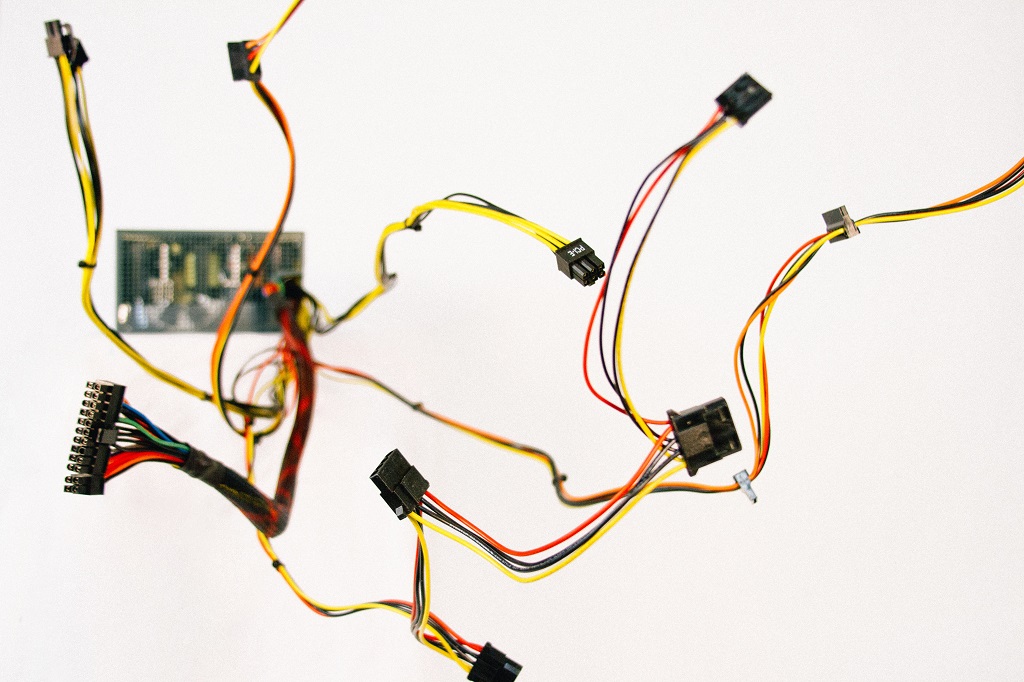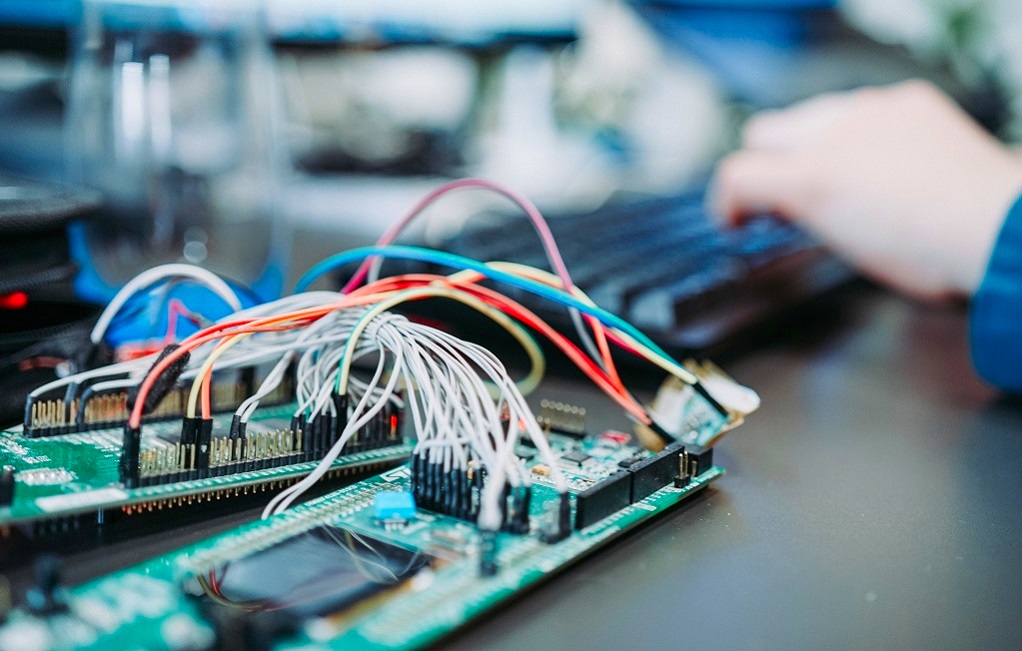ITMO University Accelerator Startups - Beginning Machine Vision Projects
Today we continue to talk about the teams that went through our accelerator . There will be two of them in this hub. The first is the startup Labra, which is developing a solution for monitoring labor productivity. The second is O.VISION with a face recognition system for turnstiles.

Photo: Randall Bruder / Unsplash.com
Labor productivity growth in Western markets has slowed. According to McKinsey, in the early 2000s this figure was 2.4%. But in the period from 2010 to 2014, it fell to 0.5%. Analysts say that since then the situation has not changed. But there is an opinion that artificial intelligence systems will help solve the problem. With AI systems, productivity growth is expected to return to around 2% over ten years. Smart algorithms help automate routine tasks and streamline workflows.
Specialists from Oracle , engineers from leading Western universities and even representatives of the Royal Community of London are already conducting research in these areas. Machine vision will play a significant role in increasing productivity growth. The technology is used to independently evaluate the workplace and employee performance. Such solutions are already being implemented by Western companies - for example, Microsoft and Walmart .
How the system works. Labra can operate in any enterprise with machine or machine-manual labor, the staff of which exceeds 15 people. With the help of cameras, she forms the so-called photo of the working day - that is, captures everything that happens during the shift. In general terms, the algorithm is as follows:
Who is on the team. The startup employs eight people - the leader and founder, two developers, three specialists in the regulation of labor. There is also a customer service manager and accountant. Some of them combine project work with studies at the university. Therefore, all follow up tasks and deadlines on their own. However, the team hosts meetings twice a week to discuss progress and development plans.
Prospects. In early September, the startup presented its project at the St. Petersburg Digital Forum . There, engineers demonstrated the capabilities of the product. Labra plans to further promote the solution and is working on the prospect of cooperation with enterprises in the country.
In 2017, MIT Technology Review magazine included face recognition in the top 10 breakthrough technologies. Part of this decision was due to the wide applicability of such systems. In particular, they can replace the usual keys and passes at the entrance to the building - for example, a number of Russian banks have already implemented similar developments. New players appear on the market, for example, a startup O.VISION is developing a similar solution. The team makes a contactless access system for turnstiles, which can be installed in 30 minutes.
How the system works. Development is a hardware-software complex installed at the checkpoint. It is based on five neural networks that process individual frames from the camera of a biometric system. The authors say that processing one image takes less than 200 milliseconds (about five frames per second). The team writes all recognition algorithms and the interface independently - developers do not use proprietary solutions. They train neural networks using the PyTorch framework .
Data processing occurs locally. This approach enhances the security of personal biometric data. The hardware includes Nvidia's Jetson TX1 board, which is designed for stand-alone devices. Also, the biometric system contains an integrated circuit of its own design for controlling turnstiles and integration with access control systems .

Photo: Zan / Unsplash.com
Startup employees. The head of the company says that the selection was held according to the principle: 60 candidates for one place. This format made it possible to take the most talented people. Currently, several programmers are working on the project, responsible for machine learning algorithms and code for embedded systems. There is also a backend developer, information security specialist and designer. Some of the employees are students who combine work with a magistracy.
Prospects. Today, O.VISION solutions are installed at the largest coffee factory in Europe. The product is also being prepared for launch in one of the St. Petersburg fitness centers and the Polytechnic University. Perhaps in the future O.VISION will also be installed at ITMO University. The head of the company says that they are already negotiating with Russian corporations: Gazprom Neft, Beeline, Rostelecom and Russian Railways. In the future - access to foreign markets.
About other accelerator projects:
Materials about the work of ITMO University:

Photo: Randall Bruder / Unsplash.com
How Labra Will Increase Productivity
Labor productivity growth in Western markets has slowed. According to McKinsey, in the early 2000s this figure was 2.4%. But in the period from 2010 to 2014, it fell to 0.5%. Analysts say that since then the situation has not changed. But there is an opinion that artificial intelligence systems will help solve the problem. With AI systems, productivity growth is expected to return to around 2% over ten years. Smart algorithms help automate routine tasks and streamline workflows.
Specialists from Oracle , engineers from leading Western universities and even representatives of the Royal Community of London are already conducting research in these areas. Machine vision will play a significant role in increasing productivity growth. The technology is used to independently evaluate the workplace and employee performance. Such solutions are already being implemented by Western companies - for example, Microsoft and Walmart .
Russian companies are also developing solutions for evaluating labor productivity. For example, the startup Labra, which went through our acceleration program . Engineers make a video surveillance system with a neural network that recognizes the actions of employees and makes it clear how they spend working time.
How the system works. Labra can operate in any enterprise with machine or machine-manual labor, the staff of which exceeds 15 people. With the help of cameras, she forms the so-called photo of the working day - that is, captures everything that happens during the shift. In general terms, the algorithm is as follows:
- The system captures the image and carries out the marking of work operations;
- Machine Learning Algorithm analyzes video;
- Then the algorithm forms a photograph of the working day;
- Next - automatic analytics calculation is performed;
- Labra generates a final report with recommendations that will enhance enterprise security and optimize its resources.
Who is on the team. The startup employs eight people - the leader and founder, two developers, three specialists in the regulation of labor. There is also a customer service manager and accountant. Some of them combine project work with studies at the university. Therefore, all follow up tasks and deadlines on their own. However, the team hosts meetings twice a week to discuss progress and development plans.
Prospects. In early September, the startup presented its project at the St. Petersburg Digital Forum . There, engineers demonstrated the capabilities of the product. Labra plans to further promote the solution and is working on the prospect of cooperation with enterprises in the country.
O.VISION will help to refuse keys and passes
In 2017, MIT Technology Review magazine included face recognition in the top 10 breakthrough technologies. Part of this decision was due to the wide applicability of such systems. In particular, they can replace the usual keys and passes at the entrance to the building - for example, a number of Russian banks have already implemented similar developments. New players appear on the market, for example, a startup O.VISION is developing a similar solution. The team makes a contactless access system for turnstiles, which can be installed in 30 minutes.
How the system works. Development is a hardware-software complex installed at the checkpoint. It is based on five neural networks that process individual frames from the camera of a biometric system. The authors say that processing one image takes less than 200 milliseconds (about five frames per second). The team writes all recognition algorithms and the interface independently - developers do not use proprietary solutions. They train neural networks using the PyTorch framework .
Data processing occurs locally. This approach enhances the security of personal biometric data. The hardware includes Nvidia's Jetson TX1 board, which is designed for stand-alone devices. Also, the biometric system contains an integrated circuit of its own design for controlling turnstiles and integration with access control systems .

Photo: Zan / Unsplash.com
Startup employees. The head of the company says that the selection was held according to the principle: 60 candidates for one place. This format made it possible to take the most talented people. Currently, several programmers are working on the project, responsible for machine learning algorithms and code for embedded systems. There is also a backend developer, information security specialist and designer. Some of the employees are students who combine work with a magistracy.
Prospects. Today, O.VISION solutions are installed at the largest coffee factory in Europe. The product is also being prepared for launch in one of the St. Petersburg fitness centers and the Polytechnic University. Perhaps in the future O.VISION will also be installed at ITMO University. The head of the company says that they are already negotiating with Russian corporations: Gazprom Neft, Beeline, Rostelecom and Russian Railways. In the future - access to foreign markets.
About other accelerator projects:
Materials about the work of ITMO University:
- ITMO University Fablab: DIY Coworking for Creative People
- How ITMO University works: a tour of the laboratory of cyberphysical systems
- Photo Tour: ITMO University Optics Museum
All Articles